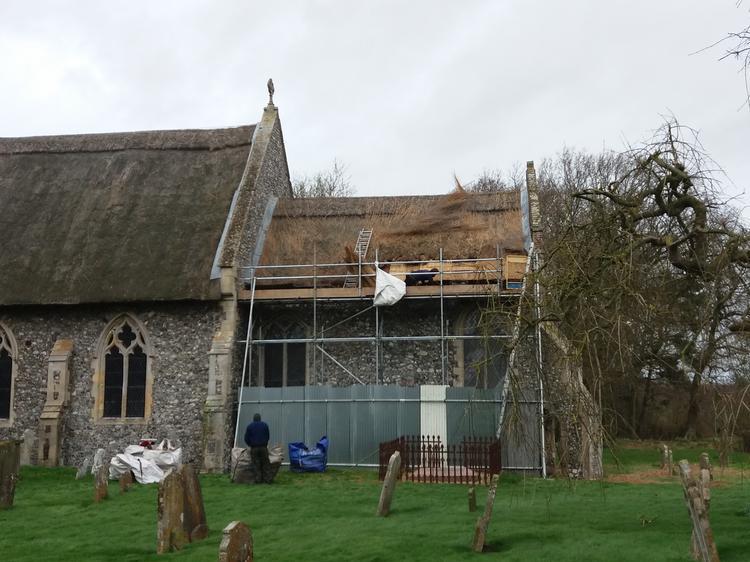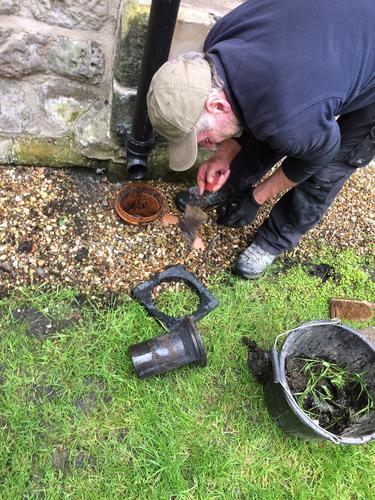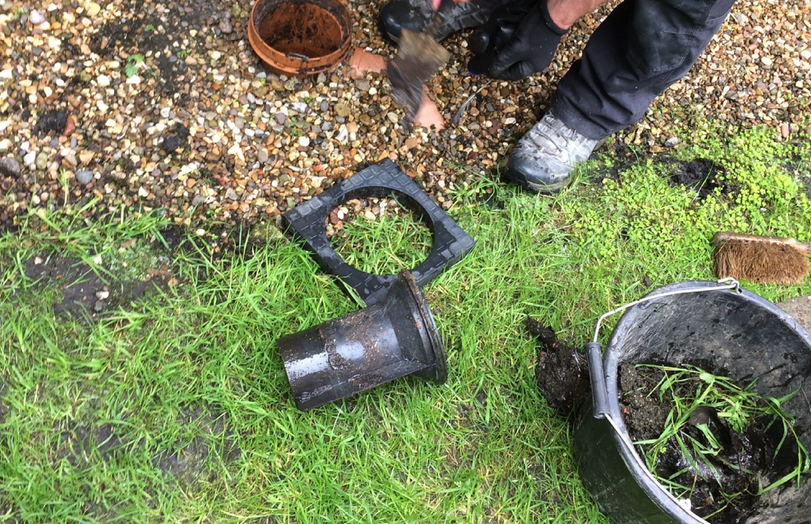CCT, Coronavirus and Conservation
This article was originally published in the Autumn 2020 issue of Pinnacle, CCT's members' magazine. To join us as a member, click here.
Sarah Robinson, Director of Conservation and Deputy CEO, explains how CCT’s maintenance and repair work has been affected by the global pandemic
COVID-19 will be the word that defines 2020.
Who could have predicted at the start of this year the huge effect that a virus could have on our daily lives and the devastating impact on our economy? CCT is no different from any other charity or business – COVID-19 has had an effect on every aspect of our work. A global pandemic was not on our risk register, and if you can measure impact by low, medium and high, this would have had to be stratospheric!
Our staff began working from home as offices closed, and churches did not begin to reopen until July after three months of being locked, but remain constrained by local lockdowns and understandably nervous volunteers. Our income for this year has seen a dramatic downturn and there has been a seismic shift in the fundraising landscape.
We have also had to get used to changes in our conservation and maintenance work. The first impact was seen early on, as the lockdown at the end of March coincided with the start of our spring maintenance visits. Cyclical maintenance is the unsung hero of our conservation work. Regular visits to unblock gutters, put back slipped slates, rod drains and clear gullies saves us time and money in the long run. There are no glamorous press shots of someone holding a trowel full of rotten leaves, yet it is vital work for anyone who cares for a historic place of worship.

Our spring maintenance visits had to be cancelled as all but essential travel for key workers was curtailed. An exception was those few churches we own which have temporary roof coverings following lead theft. Storms Dennis and Ciara had caused some visible damage a month earlier and we were concerned there was further damage not visible from the ground to others – the damage, and cost to put it right, caused by leaks during months of closure could have been significant.
Also at the end of March, we were preparing tenders for our new vestings programme – these are the initial repair contracts for newly acquired churches. We had planned for 2020 to be a busy year with work at St Peter’s, Tickencote in Rutland, St Nicholas’, Withernsea, in East Yorkshire, and St Mary the Virgin, Hemington in Somerset, as well as the final phase of work to St Peter’s, Gamston in Nottinghamshire. Work was halted temporarily as we considered the implications of deferring these projects to 2020–21. Thankfully, advice on working safely on construction sites was one of the first pieces of guidance to be published by the Government and the construction industry began to return to the new normal.

There are, however, challenges with the new normal. Working on-site with COVID-19 secure control measures means trades are generally undertaken in sequence, one after another, rather than at the same time. The uncertainty of the supply chain for materials is a current risk – the lead-in time for lead sheets is much longer than usual, for example. Some contractors and sub-contractors furloughed staff to provide a level of financial security, albeit in the short-term. All these factors affect the timescale for delivering the project, and this timescale will, in some cases, push back lime mortar work into the winter months, which is never ideal. And, of course, an extended timescale and increased hygiene measures mean higher costs which CCT will have to bear.
CCT has, in the main, relied on small-sized firms of conservation builders over its 50-year history – those craftsmen and women who live and breathe traditional materials and techniques. Even before COVID-19 there was a supply chain issue – simply not enough good builders around. In such a volatile economic environment the reality is that there may be far fewer next year. CCT and the heritage sector as a whole is concerned that these small, knowledgeable building contractors and specialists need work now to stay afloat. So, whilst there is still an element of risk in the current situation, we feel we should continue now with our new vesting programme and support those who have supported us in the past.
In 2019 we changed our focus from many small-scale repairs to around 10 larger, but urgent, projects dealing with structural damage or roofs requiring replacement. In order to pay for these projects we will need to raise significant funds from Trusts and Foundations and (hopefully) the National Lottery Heritage Fund. COVID-19 has changed the fundraising landscape dramatically as funders shift from their traditional strands to emergency support during the crisis. In the short- to medium-term it will be harder than ever to secure funds. CCT is still focused on these projects to ensure we are in the best possible place once some normality has returned. Our urgent projects will not go away – they will only get more urgent – and we need to be ready when funders open up again.

